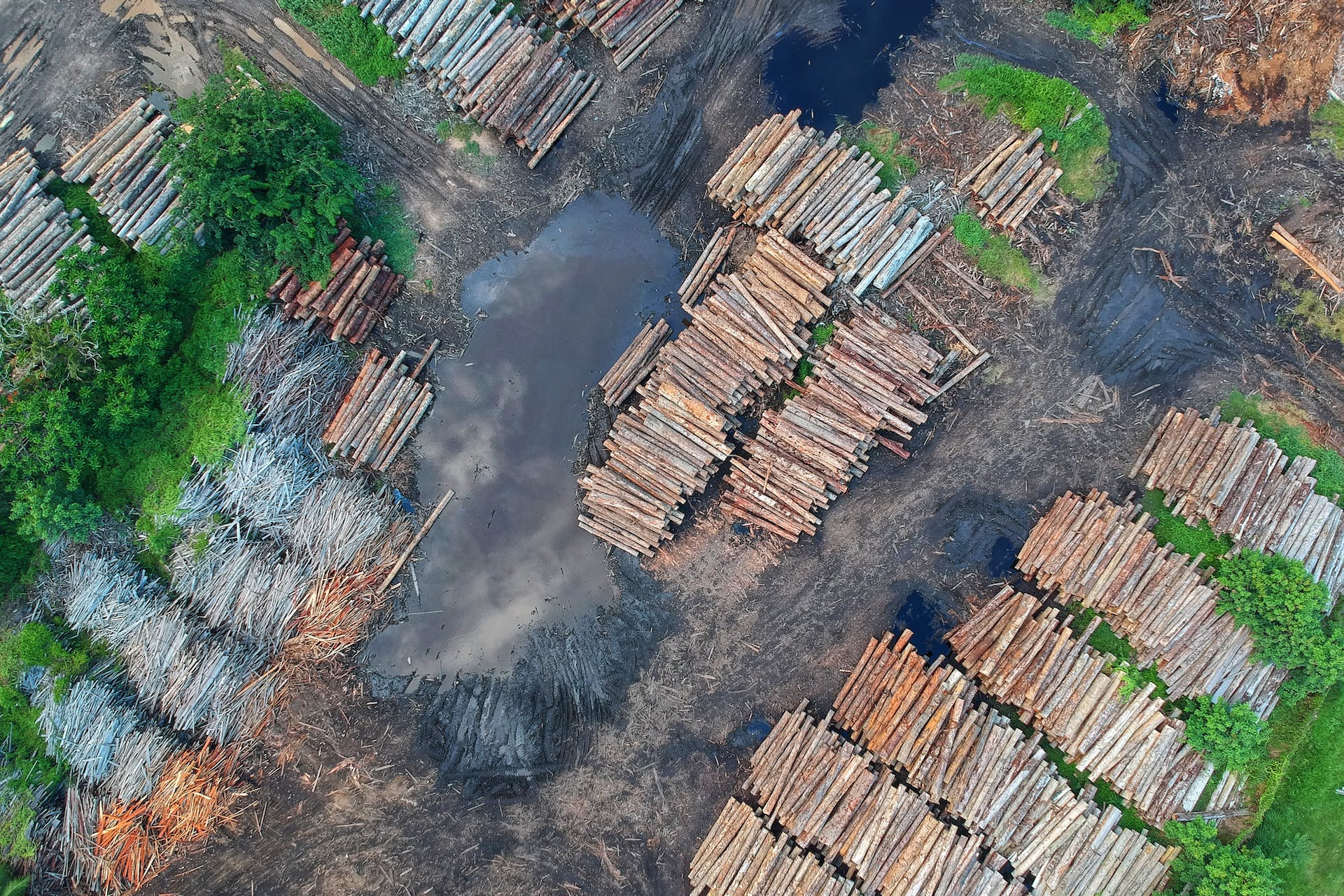Forests are the lungs of our planet, indispensable for human life. They are the home to an incredible variety of flora and fauna, serve as a carbon sink absorbing carbon dioxide, and provide timber and non-timber products that support local and global economies. But despite their significance, forests are under threat. The dual problems of deforestation and illegal logging are decimating forests worldwide. Could the answer lie in sustainable forest management? Let’s dive in and explore this complex issue.
The Menace of Deforestation and Illegal Logging
Forests cover about 31% of the world’s land area. They are a major source of livelihood for many communities, and their products play a significant role in the global economy. But illegal logging and deforestation pose a serious threat to forests. These practices lead to environmental degradation, loss of biodiversity and contribute to climate change.
Avez-vous vu cela : How can AI-powered education benefit students with diverse learning needs?
Illegal logging involves the unauthorized cutting down of trees, contravening the laws and regulations of the forest jurisdiction. This illegal activity is driven by the high demand for timber and non-timber forest products. It often occurs in areas with weak law enforcement or corruption, making it a complex problem to address.
Deforestation, on the other hand, is the complete removal of a forest or stand of trees from land which is then converted to a non-forest use. This could involve conversion of forestland to farms, ranches, or urban use. The primary driver of deforestation is agriculture, with commercial agriculture responsible for about 70% of forest loss.
Dans le meme genre : How do you organise your interior design with grey tiles ?
Why Sustainable Forestry Practices Matter
Sustainable forestry practices can be a potential solution to these challenges. These practices aim to balance the need for wood products with the preservation of the forest ecosystem. Sustainable forestry involves a range of practices, from selective logging that minimizes environmental impact, to replanting trees to replace those cut down, and managing forests in a way that maintains their health and diversity.
When implemented effectively, sustainable forestry can provide a viable alternative to illegal logging and deforestation. It provides a way to extract timber and other forest products without degrading the environment or depleting the forests. Additionally, it can contribute to rural development, providing jobs and income for local communities.
A key component of sustainable forestry is certification. Forest certification, such as the Forest Stewardship Council (FSC) certification, provides a guarantee that the forest products come from responsibly managed forests. This certification can encourage better practices in the forestry industry, discourage illegal logging, and help consumers make eco-friendly choices.
The Role of Responsible Procurement in Supporting Sustainable Forestry
Responsible procurement can play a vital role in supporting sustainable forestry practices. By choosing to buy certified wood and other forest products, businesses and consumers can support the sustainability of forests. This responsible choice can provide an economic incentive for forest owners and managers to adopt sustainable practices, as certified products often command a higher price in the market.
However, responsible procurement requires a concerted effort from all stakeholders. Businesses need to incorporate sustainable procurement policies in their operations. Consumers need to be aware of the environmental impact of their choices and opt for certified products. Governments need to enforce regulations that discourage illegal logging and promote sustainable practices.
Carbon-Based Solutions: Ensuring Forests Remain as Carbon Sinks
Forests play a critical role in mitigating climate change by absorbing carbon dioxide from the atmosphere. However, deforestation and degradation of forests reduce their ability to act as carbon sinks. Carbon-based solutions can help ensure that forests continue to serve this crucial function.
One such solution is Reducing Emissions from Deforestation and forest Degradation (REDD+), an effort to create a financial value for the carbon stored in forests. Through REDD+, countries earn carbon credits which they can trade on international markets, providing an economic incentive to protect and sustainably manage forests.
Additionally, carbon offsetting projects that involve planting trees or protecting existing forests can help absorb more CO2. These projects can be supported by businesses as part of their sustainability strategies, contributing to the fight against climate change and supporting sustainable forestry.
In conclusion, sustainable forestry practices can play a significant role in combating illegal logging and deforestation. However, their success relies on the concerted effort of all stakeholders – from forest owners and managers to governments, businesses, and consumers. By embracing these practices and making responsible choices, we can help ensure the sustainability of our planet’s precious forests.
Empowering Local Communities and Indigenous Peoples in Sustainable Forestry
Local communities and indigenous peoples are often the unsung heroes when it comes to preserving the world’s forests. These groups have managed forests sustainably for generations, and their traditional knowledge and practices can serve as a guide in our quest for sustainable forest management.
The involvement of local communities and indigenous peoples in forest management plans is paramount. They understand the local ecology and the intricate balance between different species. They can provide insights into sustainable logging practices that maintain the health and diversity of the forest ecosystems. Moreover, they often rely on the forest for their livelihood, strengthening their incentive to manage it sustainably.
Additionally, empowering these communities can be a powerful deterrent to illegal logging and deforestation. Local communities and indigenous groups can act as guardians of the forest, monitoring activities and reporting illegal actions. However, for this to work, they must be given the rights, resources, and recognition they need.
Unfortunately, these groups often face numerous challenges. They might lack legal recognition of their land rights, face threats and violence, or be excluded from decision-making processes. Addressing these challenges is a crucial step towards making sustainable forestry a reality.
Supporting local communities and indigenous peoples isn’t just about forest management. It’s about recognizing their rights, appreciating their knowledge, and enabling them to play a central role in the sustainable management of forests.
Certification Systems and Supply Chains: Ensuring Sustainable Timber and Forest Products
Certification systems play a pivotal role in promoting sustainable forestry. They provide assurance that timber and other forest products have been harvested responsibly, adhering to internationally recognized standards of sustainable forest management.
Forest certification systems, such as the Forest Stewardship Council (FSC) and the Programme for the Endorsement of Forest Certification (PEFC), set strict criteria for forest management. These include preserving the forest’s biodiversity, reducing environmental impact, and respecting the rights of local communities and workers.
Certified products offer a way for consumers and businesses to support sustainable forestry. By choosing certified wood products, they are voting with their wallets, encouraging more sustainable practices.
However, certification is just part of the story. For it to be effective, it needs to be coupled with transparent and traceable supply chains. Often, timber and other forest products pass through multiple hands before reaching the consumer – from the logger to the mill, from the exporter to the retailer. At each step, there is a risk of mixing certified and non-certified products, or of illegal products entering the supply chain.
Companies need to ensure the integrity of their supply chains by implementing traceability systems. These can include barcodes, radio-frequency identification (RFID) tags, or digital solutions based on blockchain technology.
Moreover, companies should also consider the broader impacts of their supply chains. This includes ensuring that their procurement policies don’t contribute to deforestation or violate the rights of local communities and indigenous peoples. For example, palm oil, a common ingredient in many products, is a major driver of deforestation. Companies should commit to sourcing sustainable palm oil or consider alternatives.
In Conclusion: Embracing Sustainability for the Future of Our Forests
In conclusion, a sustainable approach to forestry can help combat illegal logging and deforestation. From sustainable logging practices and responsible procurement, to empowering local communities and ensuring transparent supply chains, there are multiple strategies that can contribute to the preservation of our precious forests.
However, achieving sustainable forestry is not a task for one group alone. It requires the concerted effort of all stakeholders – from forest owners and managers to governments, businesses, and consumers. We all have a role to play in this vital mission.
By embracing sustainable forestry, we are investing in the future of our planet. Forests are more than just a source of timber and other products. They are the lungs of the Earth, an irreplaceable habitat for countless species, and a crucial ally in the fight against climate change. Preserving them is not just a noble goal – it’s a necessity for the survival and prosperity of all life on Earth.






